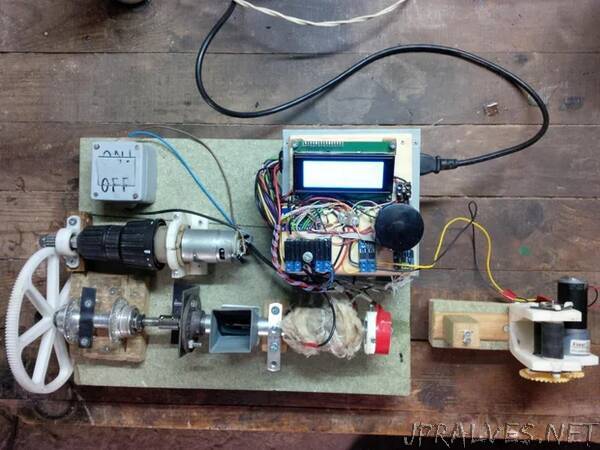
“3D printing is very exciting technology as it reaches the home scale but using brand new filament was not acceptable to me as it would just increases the plastic waste amount on the planet. I started to look for a way to turn plastic scraps around me into usable 3D printer filament… On the web I could find many plastic extruders and recyclers but they exceeded my budget so I decided to build my own process. My current system costs less than 100 with half of the parts taken from scrap.
The process consists in sorting and cleaning plastic pieces taken from defective household appliances, grinding them to small granules, and feed those granules to a home made small extrusion line. After a quick post-processing step, the output filament can be used by a 3D printer to print new objects.
All my work is widely inspired by others projects on the web : Filastruder, Lyman filament extruder, Precious Plastic project and various YouTube or instructables.com contributions. The electronic part is build using Arduino platform. Thanks to all the people behind those projects for sharing their research. Sharing what Ive learned so far on this topic is my attempt to give back to the community.
At this stage I can produce some 3D printer filament which I was able to print some things with. RC drone frames, chair plastic feet, gears and parts of the extrusion line, battery holder for e-bike and others stuffs have been successfully printed with that recycled filament. That said, Im not fully satisfied with the process as the filament output is no yet super accurate and also because the grinding system I use is not able to grind some medium and small pieces, that are left over for now.
I started working on this project 3 years ago (Jan. 2019), and what I expected to be a 2 months project ended being a never ending story of try-fail-think-improve-try-again-break-rethink-and retry almost a half-time job, but with many holidays ; ) . Im glad to share what Ive learned so far and hope youll find some useful things here.
As I have hard time fitting the whole process into a single Instructable format (many steps and sub-steps), I provide a complete guide as PDF that you can download and use offline. In this Instructable I will summary the mains steps that you’ll find with more details inside the PDF guide. Going through that Instructable will give you a good idea of how I proceed, and you’ll got more and bigger pictures here than inside the pdf guide.”
